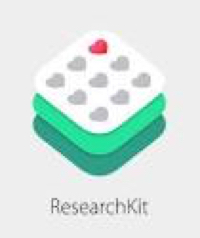Johns Hopkins (www.hopkinsmedicine.org) researchers have introduced EpiWatch, designed to use Apple Watch to collect patient data through Apple’s open source ResearchKit. The app, which runs on Apple Watch and iPhone, collects data from patients with epilepsy before, during and after their seizures. It’s the first to use ResearchKit with Apple’s smartwatch.
Over 2.5 million people are living with epilepsy in the United States. The data gathered by the app, including physiological changes, altered responsiveness and other characteristics of recurrent seizures, will be used by researchers to better understand epilepsy and to develop new methods for monitoring and managing the disease and the role of technology, says Gregory Krauss, M.D., professor of neurology at the Johns Hopkins University School of Medicine.
“The app also provides helpful tracking of seizures, prescription medication use and drug side effects — activities that are important in helping patients manage their condition,” he adds.
Johns Hopkins’ EpiWatch modules enable research participants to complete an interactive, informed consent; track their seizures in real time, including prompts on the Apple Watch testing awareness; and answer research surveys and other tasks. Users can review their data and compare their symptoms to others in their demographic with similar seizures.
The back-end data solution is being provided by Acuma Health, a division of Smart Monitor, via a secure health informatics platform that protects patient information and provides custom analytics dashboards to researchers.
“Many patients have a brief lapse of awareness during their seizures that may not be apparent to them or to others around them,” says Nathan E. Crone, M.D., associate professor of neurology at the Johns Hopkins University School of Medicine. “EpiWatch allows patients to find out for themselves if this is a problem so they can get more help.”
He adds that EpiWatch is most appropriate for patients with epilepsy who may experience an “aura” that signals an oncoming seizure. When this warning symptom occurs, the user — or a caregiver — can tap an icon on the watch face to activate the app. The app then starts recording heart rate and movements. The app also requests patient participation in a specialized memory game to evaluate patient responsiveness during the seizure. It is the first medical research app to include such a cognitive test.
Krauss and Crone have been working with developers at THREAD Research to build EpiWatch. The app makes use of many of the Apple Watch sensors — such as the accelerometer, which detects movements, and the gyroscope, which determines orientation in space — to measure and record movements and falls during seizures. The app also uses Apple Watch’s heart rate monitor, since heart rate can rise significantly during seizures.
Krauss expects that, after a year or two of data collection, Johns Hopkins will be able to develop an app that can detect most seizure types and generate an alert to notify caregivers and emergency personnel, if needed. This could not only be potentially lifesaving, but also allow people with epilepsy to have more freedom, says Krauss.
EpiWatch is available to download for free from the App Store. For more information, visit hopkinsmedicine.org/epiwatch.

